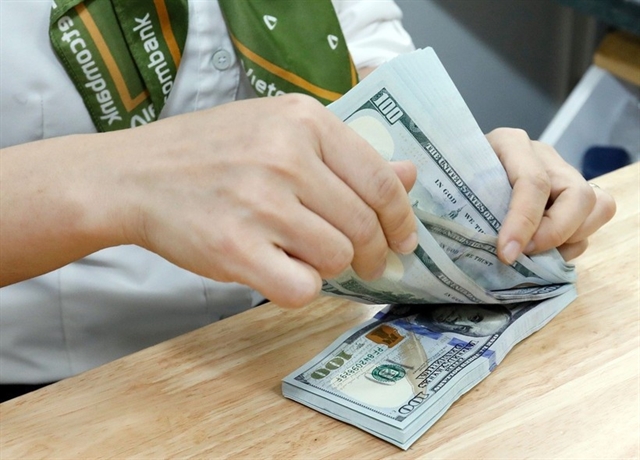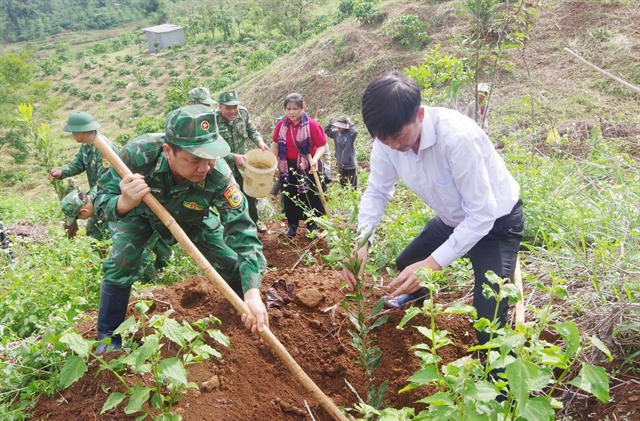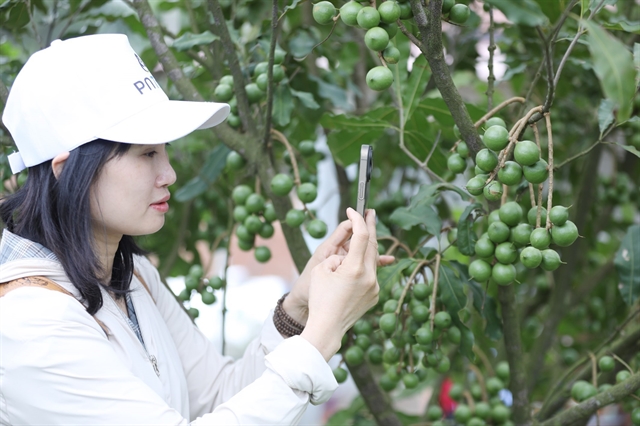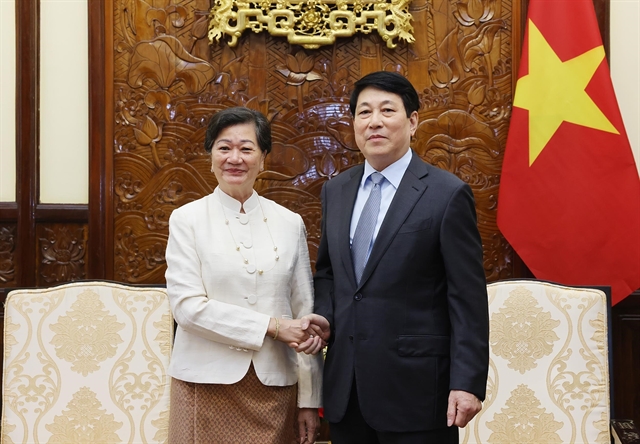 Society
Society

 |
| The former Đắk Nông Province, now part of Lâm Đồng Province, gives farmers macadamia seedlings and assists them with planting them in June this year. – VNA/VNS Photo |
LÂM ĐỒNG – Macadamia is emerging as a promising crop in Việt Nam thanks to the suitable climate and soil and the adoption of high farming standards that enhance the nut’s market value, according to experts.
Speaking at a forum held in Lâm Đồng Province on Monday, Nguyễn Huy Thuấn, deputy head of the National Agricultural Extension Centre’s crop and forestry extension division, said macadamia’s high commercial value and growing demand in international markets make it a key crop.
The current priorities are developing concentrated growing areas, investing in deep processing, and promoting exports, he said.
Last year Việt Nam’s macadamia cultivation exceeded 46,200ha, mainly in the Tây Nguyên (Central Highlands) and northwest regions.
Many provinces have applied Vietnamese Good Agricultural Practices (VietGAP) and organic standards to production, helping raise selling prices by 10–20 per cent compared with conventional methods, according to the National Agricultural Extension Centre.
Across the country, numerous farming models now use advanced techniques such as grafting, efficient irrigation, balanced fertilisation, and integrated pest management to improve yields and quality.
Average yields are 1–1.5 tonnes of dried nuts per hectare per year, with some intensive farming areas producing more than three tonnes.
However, the sector still faces significant challenges.
Around 60–70 per cent of macadamia growing areas have no strong partnerships with businesses for consumption or processing. Most farms are small and fragmented, while farming skills and management standards vary widely.
The proportion of VietGAP and organic-certified areas remains low.
Processing technologies used by many facilities are still basic and fail to meet market requirements, especially for export.
According to the Việt Nam Macadamia Association, the country exported 500–600 tonnes of kernels last year, mainly to China, Japan, South Korea, and the EU.
In the same period it imported 3,500–4,000 tonnes of raw nuts from South Africa, Australia, Kenya, and other suppliers for processing and domestic sales.
This indicates considerable domestic market potential, but local products still fall short in terms of volume, quality and price competitiveness.
Võ Duẩn, deputy general secretary of the association, said: “The global and Vietnamese trend is towards consuming nutritious nuts like macadamia, and so the sector has great potential.”
He emphasised the need to develop the crop along the entire value chain — from seed production and cultivation to harvesting and marketing.
To achieve this, he said concentrated raw material areas should be established, intensive cultivation expanded and scientific and technical advances applied at every stage.
Supply chains and regional macadamia brands should be developed in line with organic, VietGAP and GlobalGAP standards, and aligned with the national “One Commune – One Product” programme, he said.
He also called for greater use of e-commerce to reach both domestic and export markets.
 |
| A visitor takes photos of macadamia plants in a large farm in Lợi Bác Commune in the northern province of Lạng Sơn. – VNA/VNS Photo Anh Tuấn |
In Lâm Đồng Province, which has the country’s largest area under macadamia, output is expected to reach about 13,700 tonnes this year.
Nguyễn Hà Lộc, deputy director of the province Department of Agriculture and Environment, said: “Macadamia not only delivers high economic returns but also helps protect the soil, prevent erosion and adapt to climate change. It is one of our strategic crops in agricultural restructuring.”
The province has nearly 16,000ha under cultivation, with more than 1,300ha certified as meeting VietGAP standards and 33ha meeting organic standards.
It is home to 75 processing facilities and nine production–consumption linkage chains.
By 2030 Lâm Đồng aims to expand to 37,000ha with 48,000 tonnes of output, over 90 per cent of which will be pre-processed or processed.
The province’s strategy is to complete the value chain — from seed production and growing areas to deep processing, marketing and exports.
Plans include zoning production areas, applying high technology and international standards, standardising pre-processing and processing, and building the Lâm Đồng Macadamia brand to grow both domestic and export markets.
Lê Quốc Thanh, director of the National Agricultural Extension Centre, said: “We have achieved notable successes in economic efficiency, ecological benefits, and job creation for ethnic minorities.
“However, to expand the cultivation area and ensure sustainable growth, we must reposition the macadamia production value chain.”
He stressed the importance of assessing all partners in the chain.
Farmers should review land-use planning, seed quality and cultivation methods, while businesses must consider whether they are investing adequately and maintaining strong links with cropping areas, he added. – VNS




